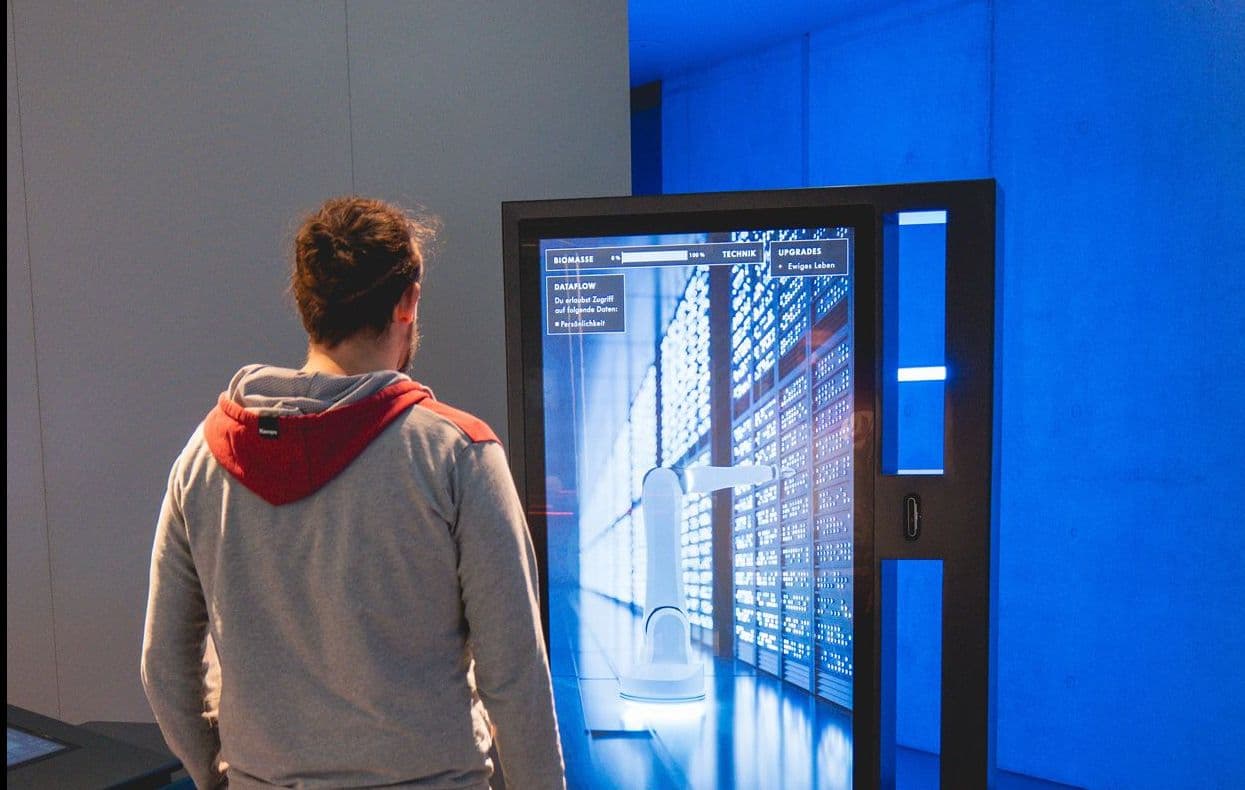Future Museum Update
In November 2023, we implemented new stations in the area of body and mind and expanded existing stations.

Customer
Deutsches Museum Nürnberg
After two years, we were able to realize new, exciting stations and an extension of the Augmented Mirror for the German Future Museum.
Chessboard
64 squares, alternating between black and white. In order to illustrate the gigantic number of all possible occupancies with equal distribution (32 white / 32 black), we programmed software that depicts exactly that: all 126886932185884164103433389335161480802865516174545192198801894375214704230400000000000000 possibilities. However, it would take several trillion years to look at all the options.


Mind reading - science fiction and the status quo
Can we read thoughts? Which areas of the brain are active for which thoughts and is it the same for everyone? The "Mind reading" station sheds light on the current state of cognitive research and contrasts this with different depictions in well-known films.
Monism / Dualism
Are body and mind inseparable? There are two opposing views on this in philosophy. Dualism usually assumes two substances - spirit and matter. Monism, on the other hand, assumes the existence of only one substance. The exhibit we have created allows visitors to find out more about these models by means of a quiz and to classify their own world view. The station consists of two 55-inch screens. The left side shows a generatively alienated head as an avatar for an AI. The size creates the remote effect required for the spatial staging. The interactive test is played by touch input on the right-hand screen.
Augmented Mirror
What would I look like as a cyborg? Which body parts could I have replaced by cybernetics? What possibilities does it offer and at what price?
The "Augmented Mirror" addresses these and other questions in the context of transhumanism - in real time and using a virtual mirror image of the individual visitors. The various prostheses are selected via a terminal and can then be seen in the mirror in the place of the "replaced" body part.
As part of the expansion of the topic of body and mind, we have added the option "Digitalization of the human mind" to this station. Here we have developed a 3D animation that shows how the digitized mind is removed from the user and stored in a library.



"Neurolink" pig
The station explains the function of Elon Musk's "Neurolink" and is based on a demonstration in which such a "Neurolink" chip was implanted in a pig. The chip docks onto the neurons responsible for perception on the pig's snout. As soon as the pig touches something with its snout, these signals can now be documented and output as visual and auditory signals. In the future, this should make mind reading possible. We have recreated this demonstration for the museum: A sensor on the snout of the pig model allows visitors to touch it and trigger equally audible and visible signals.

Gerlinde, the pig model, with the visual output of the sensor data visible behind it.